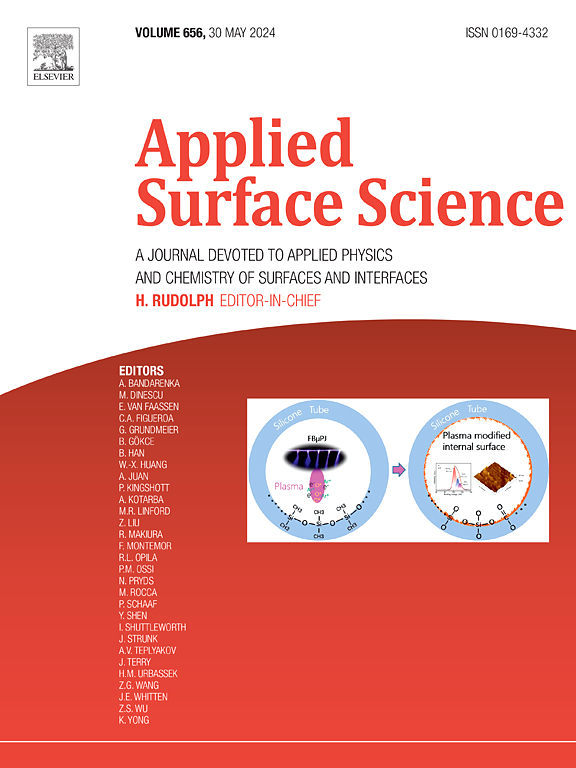Enhanced photocatalytic activity of TiO2/Au/TiO2/Au stacked nanostructures synthesized via sputtering and subsequent annealing
IF 6.3
2区 材料科学
Q2 CHEMISTRY, PHYSICAL
引用次数: 0
Abstract
We synthesized TiO2/Au/TiO2/Au (IMIM) stacked nanostructure composed of TiO2 thin films (TFs) and Au nanoparticles (NPs). The TFs of TiO2 were deposited by sputtering Ti targets in Ar/O2 gas, followed by annealing to induce the anatase phase. The Au NPs were deposited by sputtering an Au target in Ar gas and then annealed to form the NPs. The nanostructures made of TiO2/Au/TiO2 (MIM) and TiO2/Au (IM) were synthesized for the purpose of comparison. The photocatalytic activity was evaluated by measuring organic decomposition and bacterial inactivation under ultraviolet and visible light irradiation, with the visible light wavelength matching the localized surface plasmon resonance (LSPR) of Au NPs. The photocatalytic performance of IMIM was more enhanced than TiO2 TF as the visible light intensity increased. The IMIM also outperformed the MIM and IM nanostructures. The improved photocatalytic activity would be attributed to the hot electron transfer from Au NPs to TiO2, originating from the visible-light-driven LSPR at the TiO2/Au interface at the top of IMIM. Additionally, the increased visible light absorption attributed to more oxygen vacancies in the top TiO2 layer due to Au NPs and a rougher surface due to the top TiO2 layer would enhance the photocatalytic activity.


溅射和退火法制备的TiO2/Au/TiO2/Au堆叠纳米结构增强了光催化活性
我们合成了由二氧化钛薄膜(TFs)和金纳米粒子(NPs)组成的二氧化钛/金/二氧化钛/金(IMIM)叠层纳米结构。TiO2 薄膜是在 Ar/O2 气体中通过溅射 Ti 靶件沉积而成,然后通过退火诱导出锐钛矿相。Au NPs 是在 Ar 气体中通过溅射 Au 靶件沉积的,然后通过退火形成 NPs。为了进行比较,还合成了由 TiO2/Au/TiO2(MIM)和 TiO2/Au(IM)组成的纳米结构。光催化活性是通过测量紫外线和可见光照射下的有机物分解和细菌灭活情况来评估的,可见光波长与金纳米粒子的局部表面等离子体共振(LSPR)相匹配。随着可见光强度的增加,IMIM 的光催化性能比 TiO2 TF 更强。IMIM 的性能也优于 MIM 和 IM 纳米结构。光催化活性的提高可归因于金纳米粒子向 TiO2 的热电子转移,这种转移源自 IMIM 顶部 TiO2/Au 界面上由可见光驱动的 LSPR。此外,由于金氧化物在顶部 TiO2 层中产生更多的氧空位,以及顶部 TiO2 层表面更粗糙,从而增加了可见光吸收,这也会提高光催化活性。
本文章由计算机程序翻译,如有差异,请以英文原文为准。
求助全文
约1分钟内获得全文
求助全文
来源期刊

Applied Surface Science
工程技术-材料科学:膜
CiteScore
12.50
自引率
7.50%
发文量
3393
审稿时长
67 days
期刊介绍:
Applied Surface Science covers topics contributing to a better understanding of surfaces, interfaces, nanostructures and their applications. The journal is concerned with scientific research on the atomic and molecular level of material properties determined with specific surface analytical techniques and/or computational methods, as well as the processing of such structures.
 求助内容:
求助内容: 应助结果提醒方式:
应助结果提醒方式:


